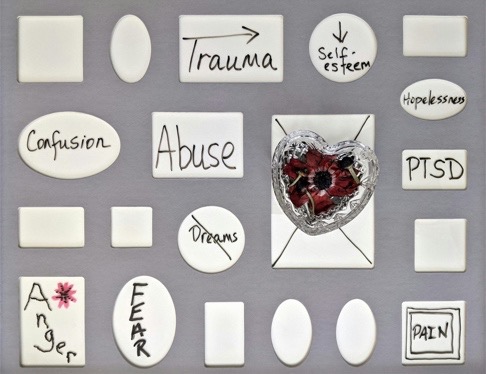
“Two of my brothers were killed in the war in Ukraine.”
“My family’s houses were destroyed in Palestine”
“I have PTSD from a trauma in my homeland.”
“There is fighting in my street back home, and I can’t reach anyone.”
“My mother was sent to a re-education centre for being a Uyghur.”
“My husband and I and our two sons were put on a kill list, so we had to flee my country.”
“My sister is sick, and I cannot go back and see her before she dies.”
These are just some of the poignant remarks delivered during my classes. So there I am, teaching a grammar point, or whatever, when their words come my way. What can I possibly say in response? Typically, I utter something inadequate such as, “Oh, I am so sorry to hear that,” or “Oh no! How awful.”
And then what? Do I move on to grammar point number two?
The pandemic, together with an increase in war and conflict, has generated a rise in trauma felt by immigrants and their families. Additionally, they have the typical challenges of moving to a new country, such as learning a new language, securing a visa, finding a job, getting a place to live, lining up schools and finding a family doctor. It is no surprise, then, that students are struggling to cope. How do we help them? They are in and out of our classes in a matter of weeks. So, aside from being empathetic and making sure that we direct them to the school’s counselling services, what should we do? What can we do? More and more, we feel the pressure to provide psychological advice, something we aren’t trained for.
“Trauma-Informed Teaching” (TIC) could be the answer. I started to investigate it last session when three students in a class of eighteen told me that they were mentally distressed due to trauma. Back in the early 2000s, Sandra Bloom and her colleagues developed a “Sanctuary Model” for organizations based on seven principles: non-violence, emotional intelligence, social learning, democracy, open communication, social responsibility, and growth and change. By following this model and using the related toolkit, companies learned more about traumatic stress and how to mitigate the effects on employees, including low productivity.[1]
We know that the same applies to our learners, that their productivity and motivation will remain low if they are highly stressed or reeling from trauma. Indeed, Victoria Wilson (2022) recently conducted a study on TIC with adult ESL students in New Zealand and the results were clear: Trauma-Informed Teaching works. Interestingly, even students who had low trauma levels preferred the TIC teaching style.
Another interesting finding from the study is that the ESL learners value the emotional support of instructors and peers more than the school’s counselling services. This means that they prioritize making connections with us, be it in groups or large class activities. Students also reported that:
- they prefer to learn grammar and vocabulary through human, engaged interactions as opposed to more detached and technical methods;
- a good learning environment hinges on classroom relationships and teaching style; and
- they do not like hierarchical-based communications that undermine their independence and maturity as adults.
We cannot pretend that we can solve our students’ mental anguish, but I think we can each help in our own way, depending on our strengths. Since story writing and poetry are passions of mine, I will continue to weave them into my teaching whenever I can. Indeed, narration is a powerful and cathartic teaching tool.[2]
Just do what seems appropriate for your class – be it photography, videos, music, art, rap, drama, animations, graphics—whatever allows your students to express themselves. Maybe they will find a release for their stresses and traumas or maybe they will just have fun and enjoy themselves!
Note: a colleague of mine, Ruba Kallab, is conducting a workshop called “Trauma-Informed Teaching Practices in Adult ESL Classrooms” on March 24. Click here for details!
[1] Bloom, S. L., & Farragher, B. J. (2013). Restoring sanctuary a new operating system for trauma-informed systems of care. Oxford University Press.
[2] See my previous post Hutchison, J. (2023, December 11). The power of storytelling. TESL Ontario Blog. https://blog.teslontario.org/the-power-of-storytelling/.

Thankyou for sharing your first hand experience with Learners living with trauma. I found the story and your path inspiring, meaningful and helpful. It encouraged me to know how much our impact has and how important it is to respond appropriately to trauma rather than pass Learners on to someone else.